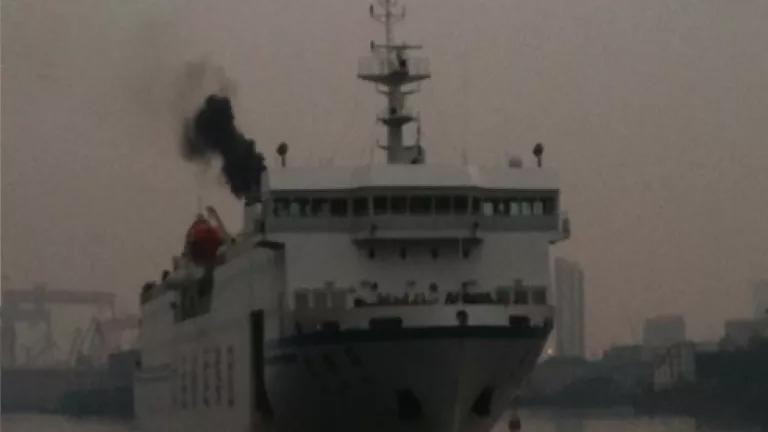How China Is Taking Major Steps to Control Shipping Air Pollution

In a series of announcements over the weekend and on Monday, the Chinese government took several important steps to control emissions from shipping activities, which until now have been virtually unregulated. Vessels and ports are major sources of the severe air pollution choking many coastal cities in China, which is home to eight of the ten busiest (and most densely populated) port cities in the world in terms of freight volume.
First, the National People's Congress adopted a number of amendments to China's 15-year old Air Pollution Prevention and Control Law. Among other things, these provisions, for the first time, provide a clear legal foundation for the government to tackle shipping emissions. They also make clear the importance of making China's energy structure cleaner, so it relies less on coal, diesel and other high-polluting fossil fuels.
The amended Air Pollution Law now requires the fuel used by ships while at berth to comply with government-set requirements for meeting emission standards. All new terminals should provide shoreside electric power so ships can turn off their diesel engines while at berth. Vessels must be certified for meeting national air emission standards in order to operate in China. The law prohibits the sale or import of nonconforming marine fuels and imposes heavy fines on violators. More details can be found in this summary.
Most importantly, the law provides clear legal authority for national government's transport authority, i.e. China's Ministry of Transport (MOT), to set more stringent air pollution requirements for key port regions by designating them as Emission Control Areas (ECAs). The establishment of special Emission Control Areas is a key strategy for reducing air pollution. The North American ECA, for example, is anticipated to reduce particulate pollution by 74 percent by 2020.
The newly amended Air Law also focuses on establishing various mechanisms to improve ambient air quality, including enhancing local governments' responsibilities for air quality management; formulating and implementing local attainment plans, particularly for non-attainment areas; and controlling major emission sources such as coal burning, industries, vehicles, vessels, dust and agricultural activities. In addition, the amended law includes a number of measures announced earlier in China's National Action Plan on Air Pollution Control, such as air pollution warning and risk mitigating systems, joint prevention and control mechanisms, public participation and supervision, and the emission trading system. Moreover, the amended law includes detailed provisions on punishment for violations and increases sharply the total penalty amount for some violations, which establishes a sound basis for effective implementation and enforcement of the law.
Two days after the Air Law amendments were enacted, MOT issued a detailed Shipping and Ports Pollution Prevention and Control Implementation Plan. This is the first time that MOT has taken concrete action to address air emissions from ships and port activities. The implementation plan includes specific goals and timetables for setting up emission control zones around key port regions, constructing shore power facilities and promoting the use of liquid natural gas (LNG) by vessels. More details can be found in this summary.
Finally, China's National Energy Administration issued a new grid and electricity distribution system plan that, among other things, requires shore power facilities to be installed at 50% of China's pilot ports by 2020.
In a related development, the U.S. and Chinese governments have launched a new initiative on green ports and vessels. The purpose of this initiative is to work together to expand the environmental benefits of available technologies, experiences and best practices to mitigate emissions from ports and vessels and their impacts on air quality and climate.
These exciting developments are a very important step towards meeting China's air pollution reduction and public health goals. NRDC stands ready to assist in these efforts.
